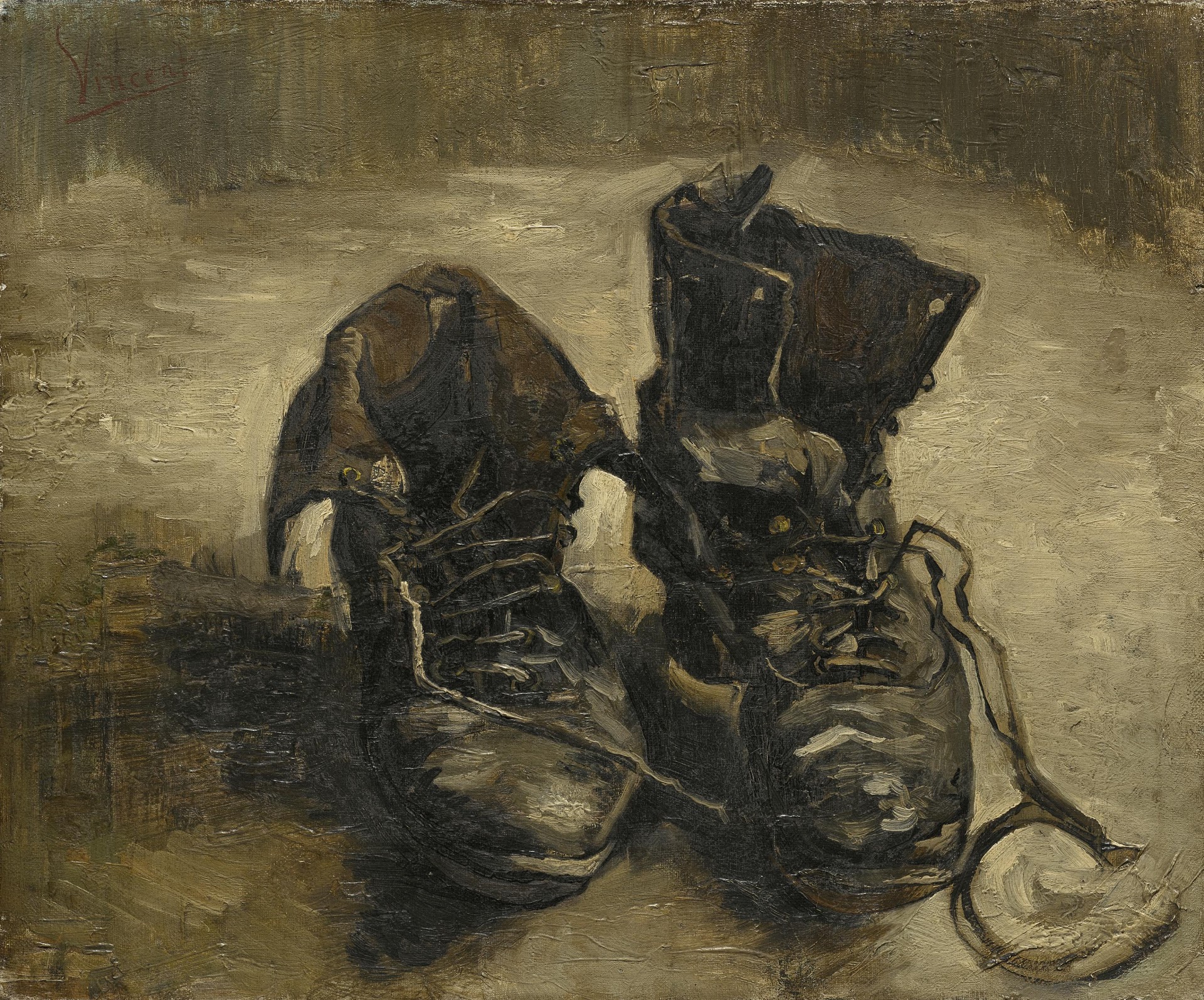
Every artist explores dimensions of space and place, orienting themselves and their works in the world, and orienting their audiences. Then there are artists like Vincent van Gogh, who make space and place a primary subject. In his early paintings of peasant homes and fields, his figures’ muscular shoulders and hands interact with sturdy walls and gnarled trees. Later country scenes—whether curling and delicate, like Wheatfield with a Reaper, or heavy and ominous, like Wheatfield with Crows (both below)—give us the sense of the landscape as a single living entity, pulsating, writhing, blazing in brilliant yellows, reds, greens, and blues.

Van Gogh painted interior scenes, such as his famous The Bedroom, at the top (the first of three versions), with an eye toward using color as the means of making space purposeful: “It’s just simply my bedroom,” he wrote to Paul Gauguin of the 1888 painting, “only here color is to do everything… to be suggestive here of rest or of sleep in general. In a word, looking at the picture ought to rest the brain, or rather the imagination.”

So taken was the painter with the concept of using color to induce “rest or sleep” in his viewers’ imaginations that when water damage threated the “stability” of the first painting, Chicago’s Art Institute notes, “he became determined to preserve the composition by painting a second version while at an asylum in Saint-Rémy in 1889,” then demonstrated the deep emotional resonance this scene had for him by painting a third, smaller version for his mother and sister.

The opportunity to see all of Van Gogh’s bedroom paintings in one place may have passed us by for now—an exhibit in Chicago brought them together in 2016. But we can see the original bedroom at the yellow house in Arles in a virtual space, along with almost 1,000 more Van Gogh paintings and drawings, at the Van Gogh Museum in Amsterdam’s site. The digitized collection showcases a vast amount of Van Gogh’s work—including not only landscapes, but also his many portraits, self-portraits, drawings, city scenes, and still-lifes.

One way to approach these works is through the unifying themes above: how does van Gogh use color to communicate space and place, and to what effect? Even in portraits and still-lifes, his figures compete with the ground. The scored and scalloped paintings of walls, floors, and wallpaper force our attention past the staring eyes of the painter or the finely-rendered fruits and shoes, and into the depths and textures of shadow and light. We begin to see people and objects as inseparable from their surroundings.

“Painting is a faith,” Van Gogh once wrote, and it is as if his paintings ask us to contemplate the spiritual unity of all things; the same animating flame brings every object in his blazing worlds to life. The Van Gogh Museum houses the largest collection of the artist’s work in the world. On their website you can read essays about his life and work, plan a visit, or shop at the online store. But most importantly, you can experience the stunning breadth of his art through your screen—no replacement for the physical spaces of galleries, but a worthy means nonetheless of communing with Van Gogh’s vision.

Related Content:
Simon Schama Presents Van Gogh and the Beginning of Modern Art
Josh Jones is a writer and musician based in Durham, NC. Follow him at @jdmagness


I’m not seeing a way to download any of the content at the Van Gogh site. Any clues, anyone?
Click on the ‘digitised library’ blue link in the article. That takes you to vangoghmuseum website where you can download the images in different sizes
Seems to be behaving for me now. Couldn’t spot the download arrow at the bottom when viewing a painting yesterday. Thanks.
Is there a way to download all the images at once? Instead of one by one.